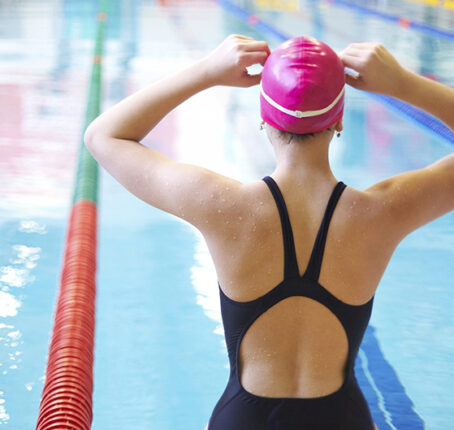
Do Single-Sport Athletes Have More Overuse Injuries?
People ask and researchers ponder: How much does specializing in a single sport as a youngster increase the risk of developing overuse injuries? And: Is it specialization that’s the problem or is the real culprit the added training and competition that often goes with specialization?
Most experts (not all) agree that young athletes who specialize appear to be at greater risk of developing overuse injuries than athletes who play multiple sports, even after accounting for the extra hours they often devote to getting fitter and better. And the more specialized the athlete, the greater the risk.
A 2018 review in the journal Pediatrics that summarized this research concluded that highly specialized athletes are nearly twice as likely to suffer an overuse injury as athletes who don’t specialize.
However, these researchers and virtually everyone else studying this area acknowledge that there isn’t a lot of high-quality evidence to inform activity recommendations for youngsters. Better studies are needed.
“Although there is consistent evidence that [a] high level of sport specialization is associated with a greater risk of developing an overuse injury, the quality of included studies is limited,” David R. Bell, PhD, ATC, and colleagues observed in their Pediatrics review.
Overuse injuries and guidelines
Increasing numbers of children are focusing exclusively on one sport at younger and younger ages. Overuse injuries to bones, tendons and joints occur when they don’t have enough time to recover between repeated bouts of loading. Problematic activities include throwing too many innings of baseball, swimming too many laps, blasting a lot of tennis balls or volleyballs, or running or landing repeatedly on hard surfaces. In growing bodies, these can cause painful and debilitating injuries to the shoulder, elbow, wrist, knee and lower leg.
The treatment usually includes cutting back or stopping the offending activity. If the injuries are recognized soon enough, they often heal. But sometimes they don’t. Whether they heal or not, they may cause young athletes to drop out of sports.
Recent advisories from medical and sports organizations say early specialization and year-round training may lead to burnout and overuse injuries. They caution athletes to postpone specialization until later in adolescence and limit the time they allot to a single sport as youngsters. (See the related article from The Sports Institute, Four Keys to Minimizing Injuries and Maximizing Potential in Growing Athletes)
In addition, they point out that specializing in a single sport in childhood or adolescence is not necessary to become an elite athlete. (See Myth: Specialize Early to Become an Elite Athlete.)
What the new review showed
The report in Pediatrics compared the risk of overuse injuries in highly specialized athletes to the risk in less specialized athletes. The authors combined data from more than 5,000 children and adolescents.
They applied a three-question scale to assess an athlete’s level of specialization:
- Did the athlete quit another sport to focus on a primary sport?
- Does the athlete consider the primary sport more important than the athlete’s other sports?
- Does the athlete train more than eight months a year in the primary sport?
A “yes” answer to two questions indicated moderate specialization; “yes” to three questions reflected high specialization.
High specialization almost doubled the risk of overuse injury. Moderate specialization increased the risk by about half as much.
“Clinically, the results of this review are important because they support the notion that sport specialization increases injury risk,” the authors concluded.
Sorting meaning from lower quality studies
None of the studies in the 2018 review met the highest standards for this kind of research. None has a strong enough design to say whether one particular risk factor or behavior caused the injuries. They are only able to show links or associations between injuries and their potential causes.
Other recent studies have highlighted the difficulty of assigning a definitive cause for overuse injuries. A 2018 survey found that multisport female athletes in middle and high school trained about eight hours each week. By comparison, the single-sport athletes spent about 14 hours training each week—a twofold escalation. The results are a striking illustration of how intertwined the relationship is between specialization and high-volume training and how difficult it may be to separate their independent contributions to overuse injury.
The guidelines issued by medical and sports groups have routinely acknowledged the mixed quality of the research in this area. The 2018 guidelines for youth basketball players in the U.S included an extensive review of the science. “Regarding the relationship between injury and early single-sport specialization, the data at this time are limited and do not provide consistent evidence,” say John P. DiFiori, MD, and colleagues who coauthored the basketball guideline in an initiative led by the NBA.
“In addition to training volume per se, single-sport specialization may constitute an independent risk factor of overuse injury,” they submit.
In other words: High training volumes increase the chance of developing overuse injuries. Specializing in a single sport appears to create additional problems of its own. And both are consistently linked to a range of injuries that make children and adolescents miserable.
What to do
As folks await better research, several organizations have endorsed guidelines for training and competition levels that they hope will minimize the risk of overuse injuries and burnout.
Simplified, their recommendations boil down to this:
- Play more than one sport
- Limit training hours and get enough rest
- Take time off every year
- Participate in an injury prevention exercise program

